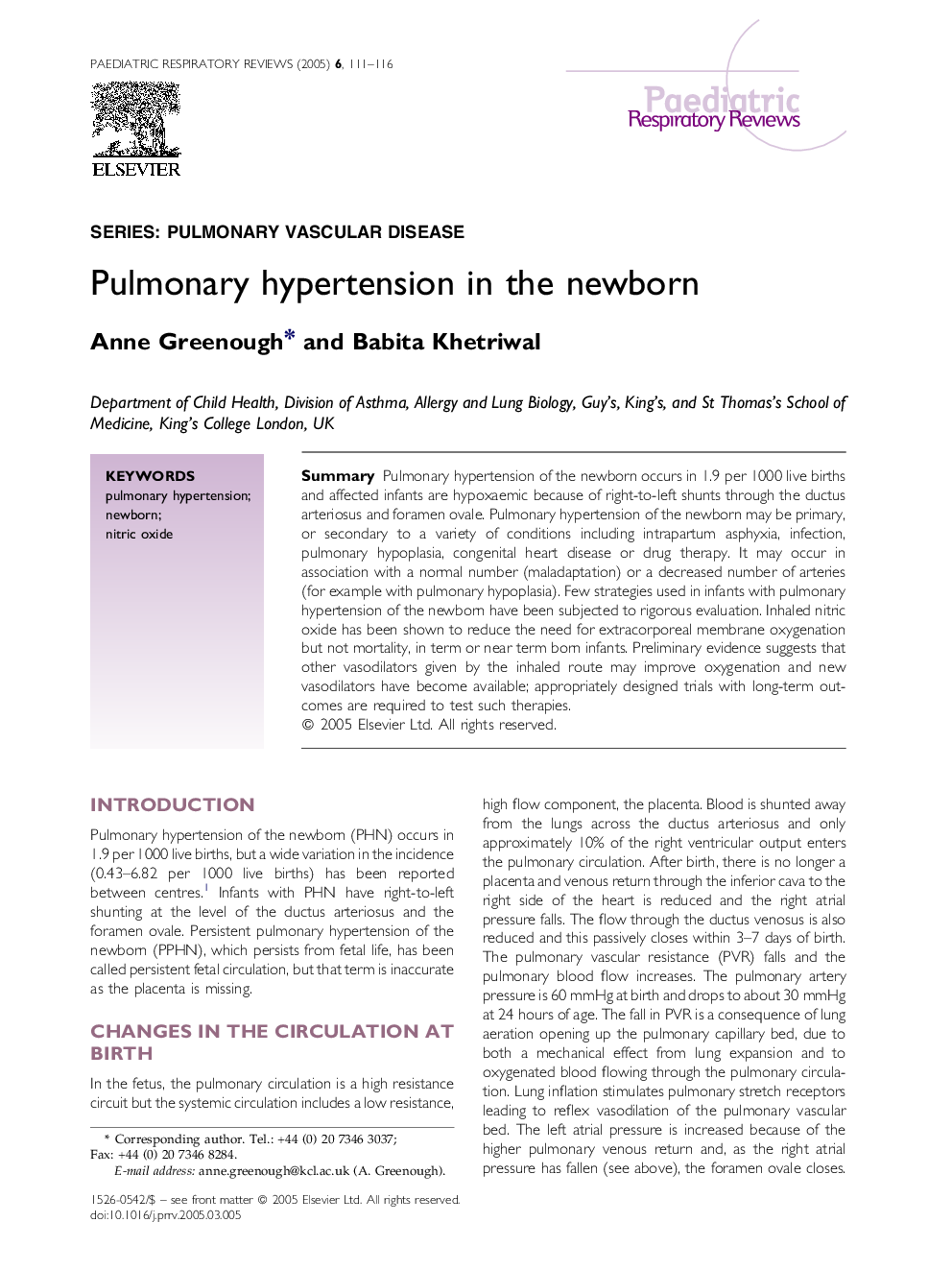| Article ID | Journal | Published Year | Pages | File Type |
|---|---|---|---|---|
| 9376754 | Paediatric Respiratory Reviews | 2005 | 6 Pages |
Abstract
Pulmonary hypertension of the newborn occurs in 1.9 per 1000 live births and affected infants are hypoxaemic because of right-to-left shunts through the ductus arteriosus and foramen ovale. Pulmonary hypertension of the newborn may be primary, or secondary to a variety of conditions including intrapartum asphyxia, infection, pulmonary hypoplasia, congenital heart disease or drug therapy. It may occur in association with a normal number (maladaptation) or a decreased number of arteries (for example with pulmonary hypoplasia). Few strategies used in infants with pulmonary hypertension of the newborn have been subjected to rigorous evaluation. Inhaled nitric oxide has been shown to reduce the need for extracorporeal membrane oxygenation but not mortality, in term or near term born infants. Preliminary evidence suggests that other vasodilators given by the inhaled route may improve oxygenation and new vasodilators have become available; appropriately designed trials with long-term outcomes are required to test such therapies.
Related Topics
Health Sciences
Medicine and Dentistry
Perinatology, Pediatrics and Child Health
Authors
Anne Greenough, Babita Khetriwal,
